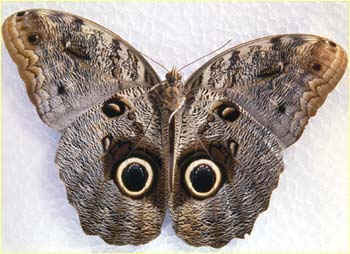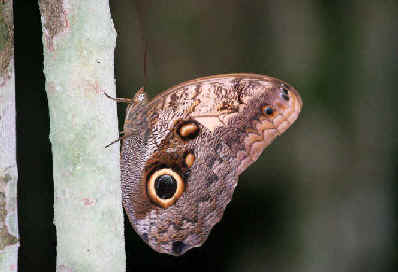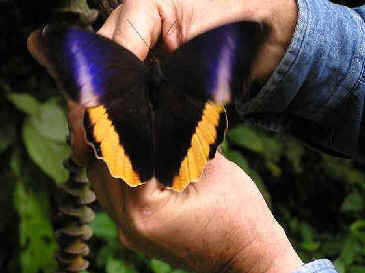
E-mail: font@focusonnature.com
Phone: Toll-free in USA 1-888-721-3555
or 302/529-1876
 |
PO
Box 9021, Wilmington, DE 19809, USA E-mail: font@focusonnature.com Phone: Toll-free in USA 1-888-721-3555 or 302/529-1876 |
Part
4 of a List
with some Photos
of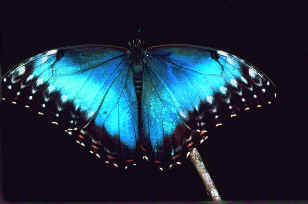
South America
Butterflies
and
Moths
Noting those during
Focus On Nature Tours
in Argentina,
Brazil,
Chile,
Ecuador,
Peru,
Venezuela
Fourth Part of a List of South America Butterflies in 6 Parts,
compiled by Armas Hill
Here, in Part #4: Nymphalidae, the Brushfoots
Some in NYMPHALIDAE,
the CLEARWINGS and most of the SATYRS, are in:
PART #5 OF THIS LIST OF SOUTH AMERICAN BUTTERFLIES
Among Butterfly groupings in this list below, links to these:
Subfamily CHARAXINAE, Tribe PREPONINI
with the genera: Agrias, Archaeoprepona, Noreppa, Prepona
Leaf Butterflies: Subfamily CHARAXINAE, Tribe ANAEINI
with the genera: Anaeomorpha,
Coenophlebia, Consul, Fountainea, Hypna, Memphis, Polygrapha, Siderone, Zaretis
Emperors: Subfamily APATURINAE with
the genus: Doxocopa
Snout: Subfamily LIBYTHEINAE with the genus Libytheana
Subfamily BIBLIDINAE, Tribe BIBLIDINI with the genera: Biblis, Mestra, Vila
Subfamily NYMPHALINAE, Tribe COEINI with the genera: Baeotus, Historis
Subfamily NYMPHALINAE, Tribe NYMPHALINI
with the genera: Colobura, Hypanartia,
Pycina, Smyrna, Tigridia, Vanessa
Crackers
& allies: Subfamily
BIBLIDINAE, Tribe AGERONIINI
with the genera: Batesia, Ectima, Hamadryas, Panacea
Purplewings
& allies: Subfamily BIBLIDINAE, Tribe EPICALLINI
with the genera:
Catonephele, Cybdelis, Eunica, Myscella, Nessaea
Daggerwings: Subfamily CYRESTINAE
with
the genus Marpesia
Sailors:
Subfamily BIBLIDINAE, Tribe EUBAGINI
with the genus Dynamine
"Eighty-Eight"
Butterflies: Subfamily BIBLIDINAE, Tribe CALLICORINI
with the genera: Antigonis,
Callicore, Catacore, Diaethria, Haematera, Mesotaenia,
Orophila, Paulogramma, Perisama
Banners
& allies:
Subfamily BIBLIDINAE, Tribe EPIPHILINI
with the genera:
Asterope, Epiphile, Nica, Peria, Pyrrhogyra, Temenis
Sisters:
Subfamily LIMENITIDINAE, Tribe LIMENITIDINI
with the genus Adelpha
Peacocks, Page, Malachite: Subfamily NYMPHALINAE, Tribe VICTORININI
with the genera: Anartia, Metamorpha, Siproeta
Buckeyes, Mimic: Subfamily NYMPHALINAE, Tribe JUNONIINI
with the genera: Junonia, Hypolimnas
Patches, Checkerspots,
Crescents:
Subfamily
NYMPHALINAE, Tribe MELITAEINI
with the genera: Anthanassa,
Castilia, Chlosyne, Dagon, Eresia, Gnathotriche, Higginsius,
Janatella, Mazia, Ortilia, Phystis, Tegosa, Telenassa
Longwings:
Subfamily HELICONIINAE, Tribe HELICONIINI
with the genera: Agraulis, Dione, Dryadula, Dryas, Eueides, Heliconius, Laparus, Neruda, Philaethria, Podotricha
Fritillaries: Subfamily HELICONIINAE, Tribe ARGYNNINI with the genera: Euptoita, Yramea
Subfamily HELICONIINAE, Tribe ACRAEINI with the genera: Abananote, Actinote, Altinote
Milkweed Butterflies: Subfamily
DANAINAE, Tribe DANAINI
with the genera: Danaus, Ituna, Lycorea
Morphos: Subfamily SATYRINAE, Tribe MORPHINI with the genera: Antirrhea, Caerois, Morpho
Owl Butterflies: Subfamily SATYRINAE, Tribe BRASSOLINI
with the genera: Bia,
Brassolis, Caligo, Catoblepia, Dasyophthalma, Dynastor, Eryphanis, Narope,
Opoptera, Opsiphanes, Selenophanes
Links to other South America Butterfly
groupings in this list:
Part
#1 - Swallowtails (Papilionidae)
Part
#2 - Whites, Yellows, Sulphurs (Pieridae)
Part #3 - Hairstreaks, Blues (Lycaenidae) & Metalmarks (Riodinidae)
Part #5 - Clearwings (Ithomiini) & Satyrs (Satyrinae)
Part #6 - Skippers (Hesperiidae)
Some Photos of Butterflies and Moths during FONT Tours in Ecuador
![]()
In South America,
the countries of Colombia, Peru, Brazil, and Ecuador each have a
great number of butterfly species.
Ecuador has the greatest concentration of species per kilometer. In that
country, there are said to be 2,726 species of butterflies.
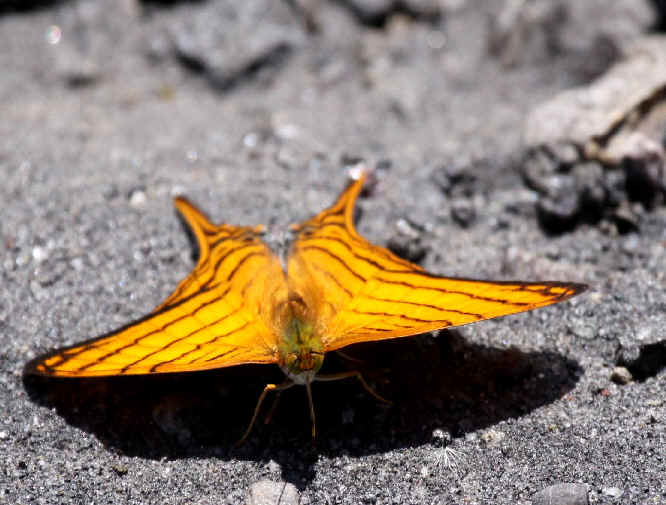
An Orange Daggerwing
photographed during
the FONT tour in Ecuador in April 2013
(photo by Marie Gardner)
Codes relating to illustrations in
various books:
Numbers noted as (AZ:xx)
refer to pages in "Butterflies of Arizona - A Photographic
Guide", by Bob Stewart, Priscilla Brodkin, & Hank Brodkin
(with fine photographs).
Numbers noted as (BB:xx) refer to pages
in "Butterflies of Buenos Aires (Argentina)", by Gustavo Canals
Numbers noted as (C:xx) refer to pages in
"A World of Butterflies", with text by Brian Cassie, and
photographs (superb) by Kjell Sandved
Numbers noted as (D1:xx)
refer to plates in "The Butterflies of Costa Rica and their
Natural History (Volume 1): Papilionidae, Pieridae, Nymphalidae", by
Philip J. DeVries
Numbers noted as (DV:xx) refer to pages
in "Butterflies Of South America", by Bernard D'Abrera
Numbers noted as (EBE:xx) refer to pages
in "Ecuador's Butterfly Ecology", by Xavier Silva.
Numbers noted as (F:xx) refer to pages
in "The Illustrated Encyclopedia of Butterflies", by Dr. John
Feltwell
Numbers noted as (K:xx) refer to pages
in the "Kaufman Focus Guide to Butterflies of North America", by
Jim Brock & Kenn Kaufman
Numbers noted as (MCA:xx) refer to pages
in "A Swift Guide to the Butterflies of Mexico & Central
America" by Jeffrey Glassberg
Numbers noted as (MM:xx) refer to pages
in "Mariposas (Butterflies) of Missiones (Argentina)", by
Gustavo Canals
Numbers noted as (PE:xx)
refer to plates in the "Peterson Field Guides to Eastern
Butterflies", by Paul Opler & Vichai Malikul, 1998 edition.
Those noted as (PEp:xx)
refer to a page with a photograph.
Numbers noted as (PW:xx) refer to plates
in the "Peterson Field Guide to Western Butterflies", by Paul
Opler & illustrated by Amy Bartlett Wright, 1999 edition.
Those noted as (PWp:xx)
refer to a page with a photograph.
Numbers noted as (RG:xx) refer to pages
in "Butterflies of the Lower Rio Grande Valley" by Roland Wauer.
Numbers noted as (S:xx)
refer to pages in the "Smithsonian Handbook, Butterflies
& Moths", by David Carter.
Numbers noted as (WGC:xxx) refer to pages in "A Wildlife Guide to
Chile", by Sharon Chester.
Country Codes:
AR: in Argentina
ba: province of Buenos Aires
ne: northeast Argentina,
including Iguazu Falls (ARne
also on Brazilian side at Iguazu Falls)
BR: in Brazil
am: Amazonian region
mg: Mato Grosso, including the
Pantanal and north to Alta Floresta / Rio Cristalino
se: southeast Brazil
CH: in Chile
EC: in Ecuador am:
Amazonian nw: northwest EC
VE: in Venezuela
Butterflies observed during FONT tours noted by an (*) after the 2-letter
country code.
(ph): species with a photo in the FONT website
Other Links:
Upcoming FONT Birding & Nature Tours
in South America in:
Brazil
Ecuador Uruguay Venezuela Argentina
Chile
Lists & Photo Galleries of BIRDS, including those during FONT Tours in South America
Lists & Photo Galleries of MAMMALS, relating to FONT Tours in South America
Alphabetical Directory of Butterflies by Genus of those with Photos in the FONT Website
Directory of Photos in this Website
List of South American
Butterflies, Part
#4
Family NYMPHALIDAE: BRUSHFOOTS
Cosmopolitan, with subfamilies range from 8 to 25, depending upon taxonomic
treatment.
This is the most diverse family of butterflies, with approximately 6,000
known species worldwide.
Brushfoot butterflies appear 4 rather than 6-legged
as their 2 front legs are much reduced.
Subfamily CHARAXINAE, Tribe
PREPONINI
Butterflies in PREPONINI have irridescent blue colors on the
upperside of their wings.
Most species are in
primary or secondary forests, where they usually fly up in the canopy.
Sometimes they are in
open areas, where they can be found feeding on decaying
fruits and other organic
matter.
The butterflies always
feed and rest with their wings firmly closed. But if disturbed they sometimes
give
a very rapid flick of the
wings, displaying their vivid coloration on their upperside.
Genus AGRIAS
Butterflies in AGRIAS spend most of
their time, as noted above, in the forest canopy.
They are attracted to
rotting fruits, fish, and mammal dung.
AGRIAS are strong
fliers and very shy.
Their main flying time
seems to be between October and March to April.
The males of all
AGRIAS species have prominent yellow tufts of androconial scales on the
hindwings.
The AGRIAS are
among the most beautiful of all butterflies, said to be the "true gems
of the insect world".
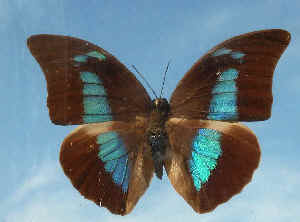
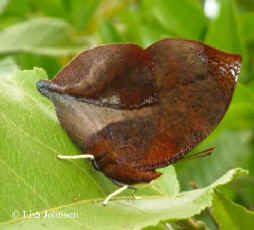
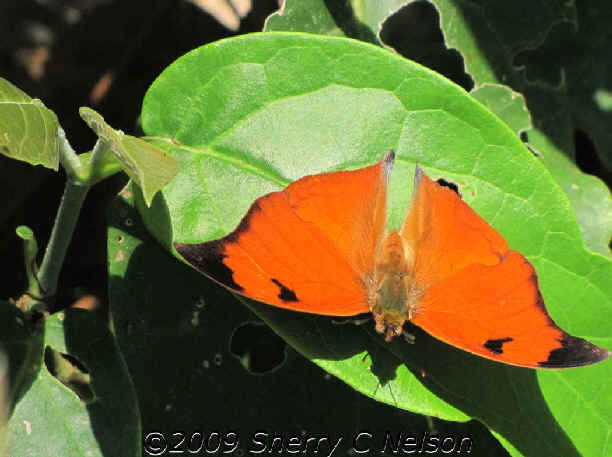

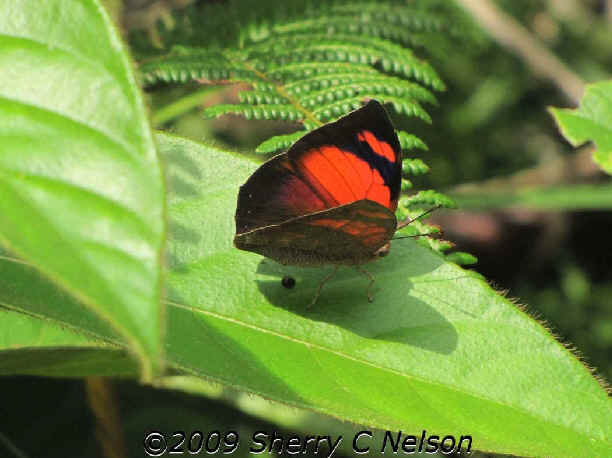
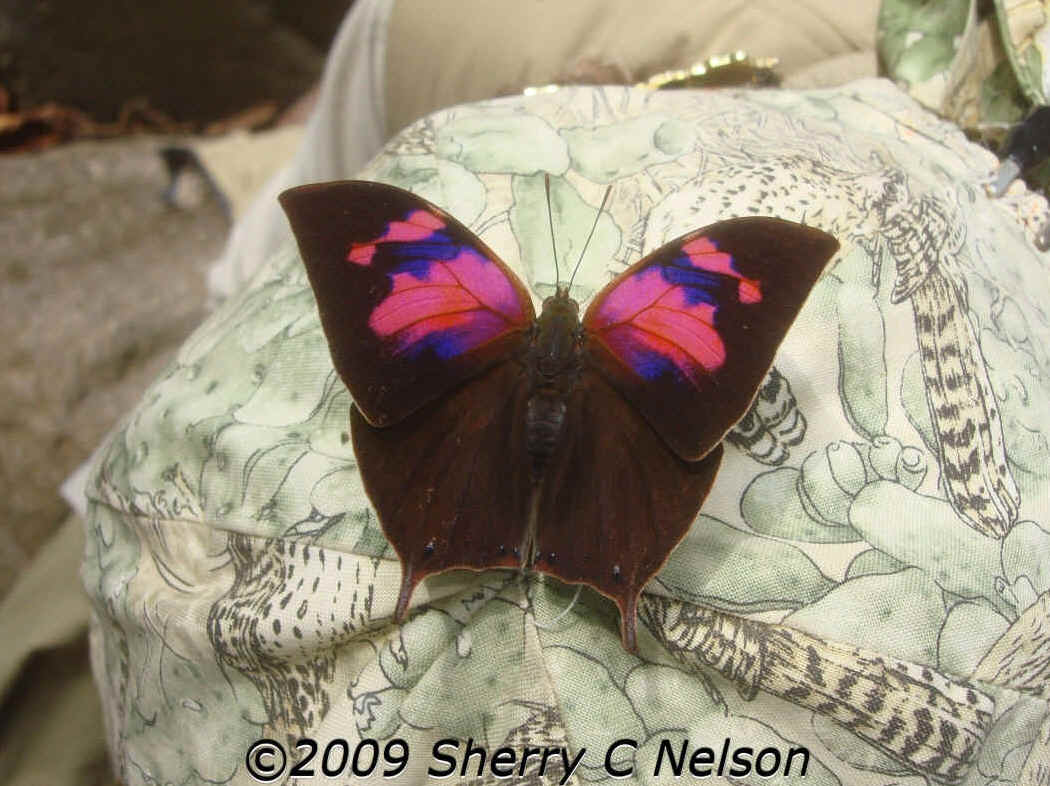
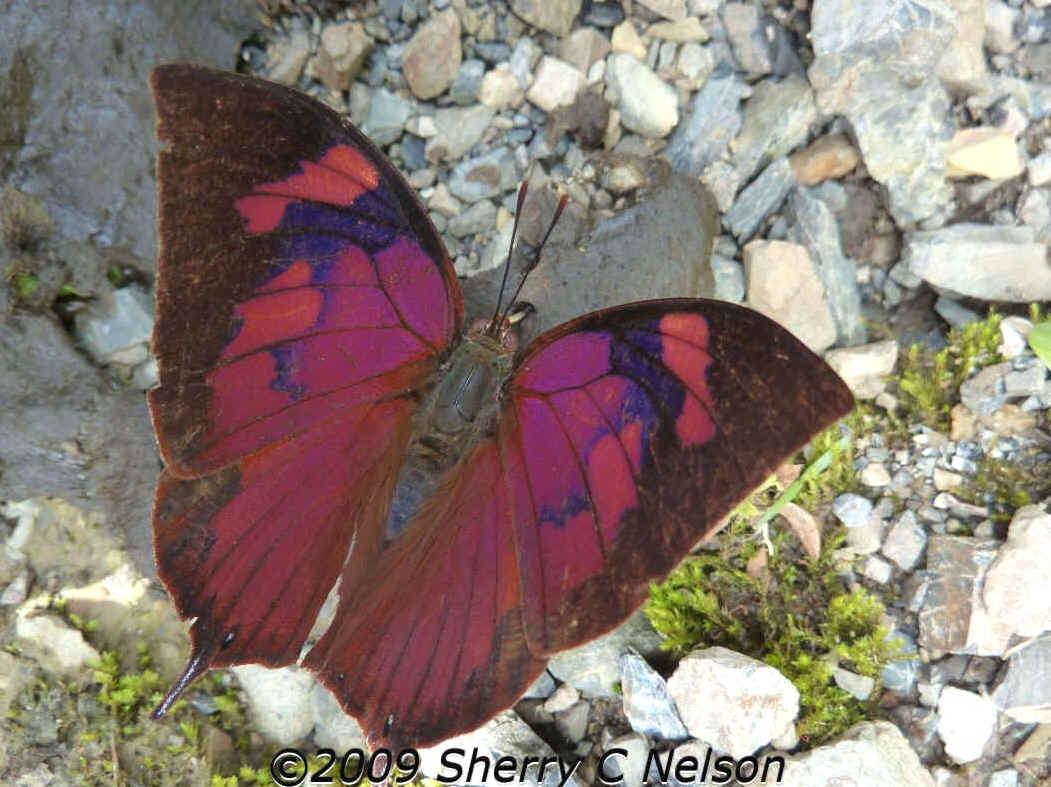
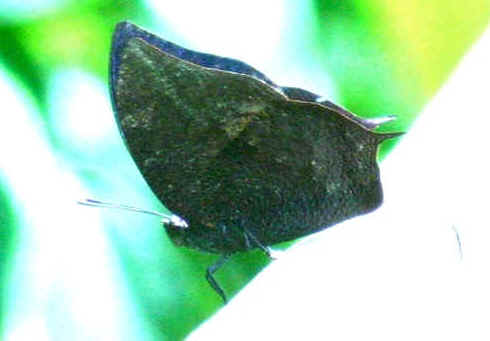
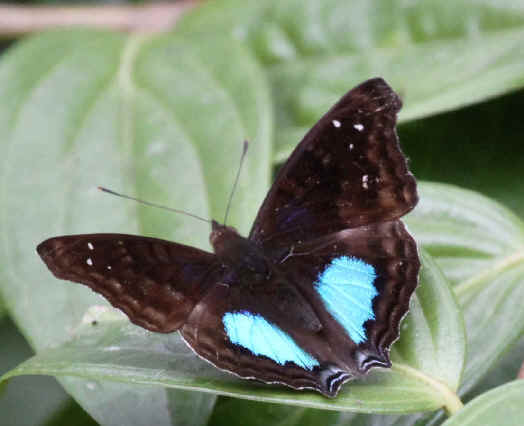
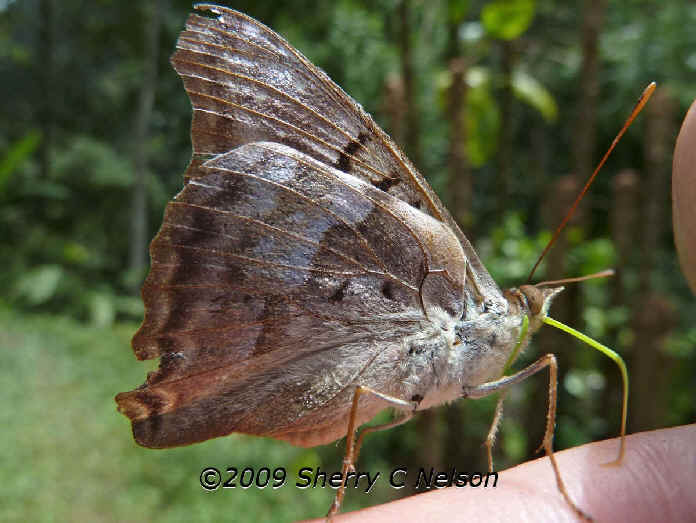

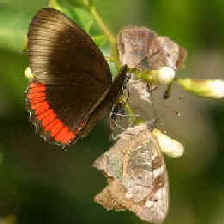
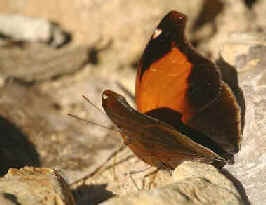
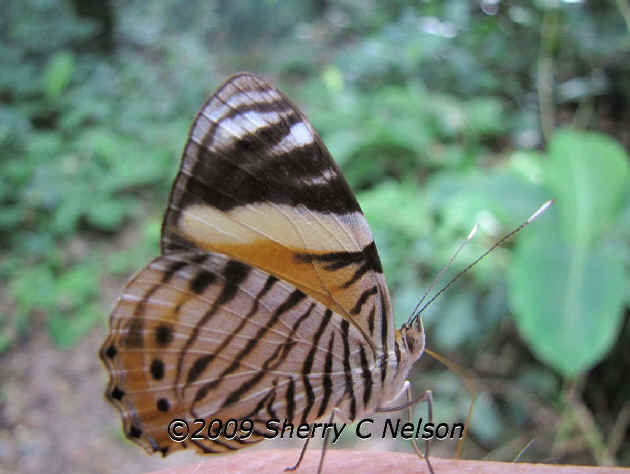
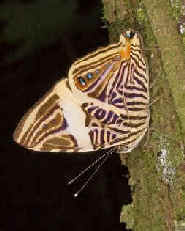
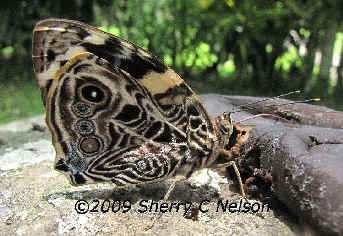
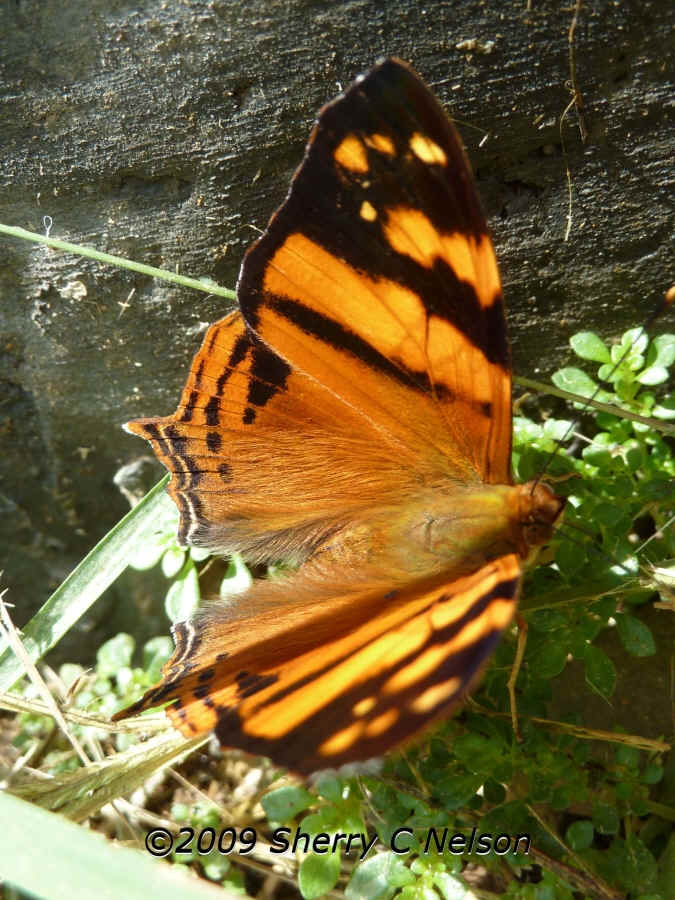
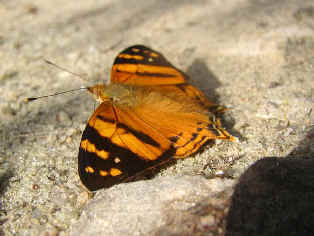
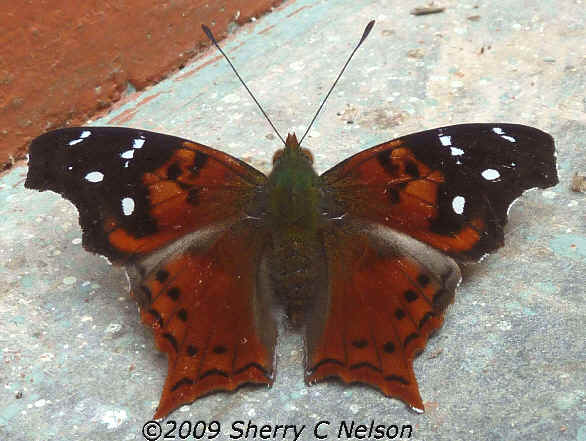
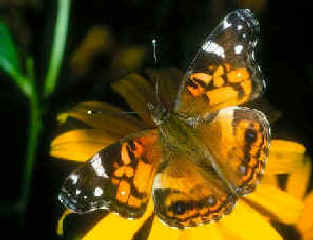
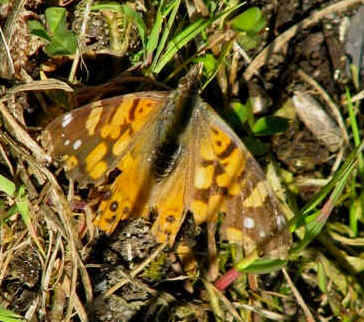
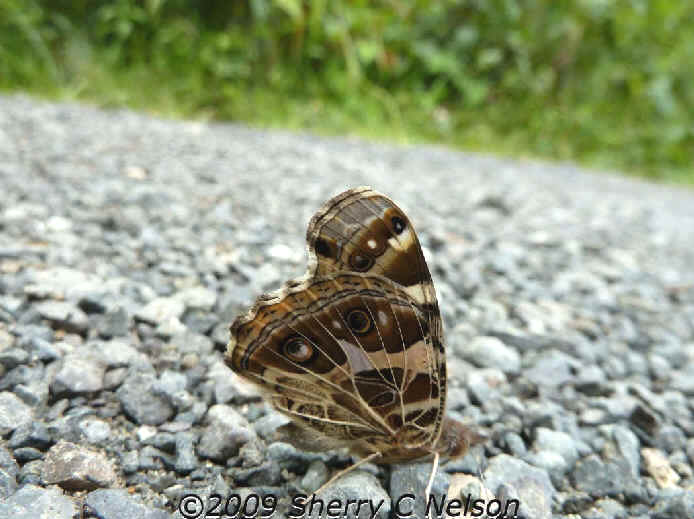
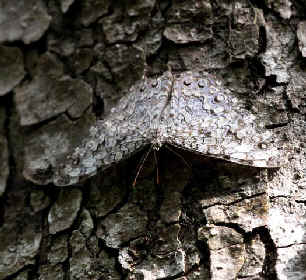
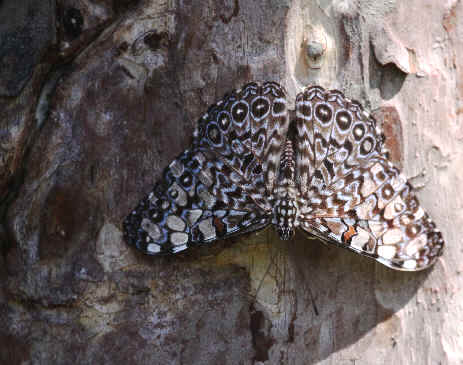
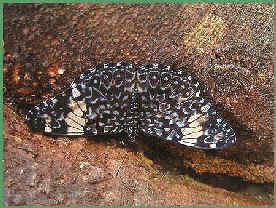
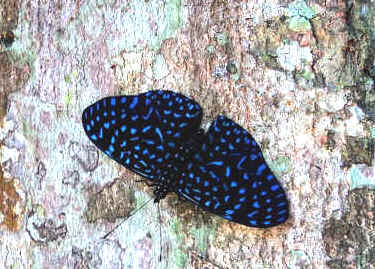
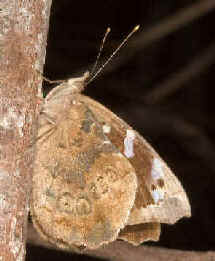
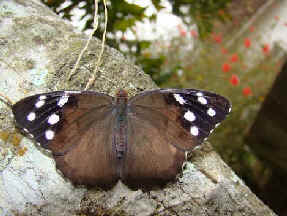
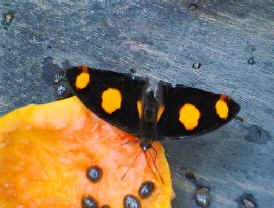
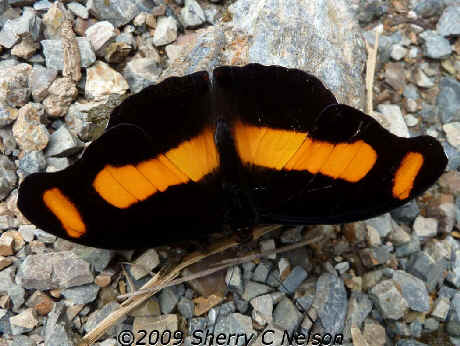
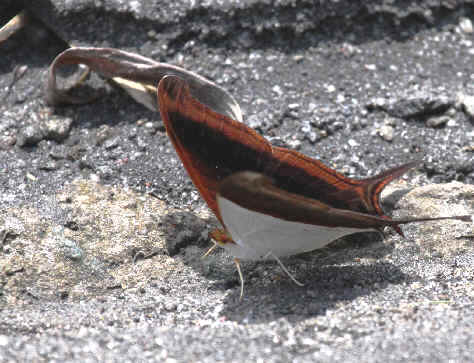
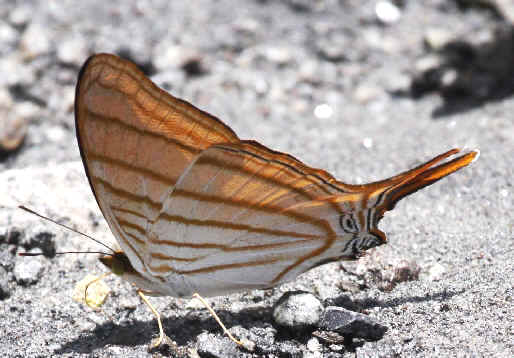
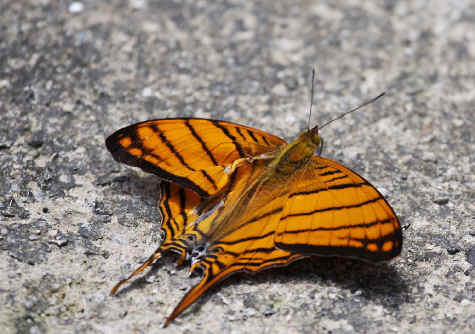
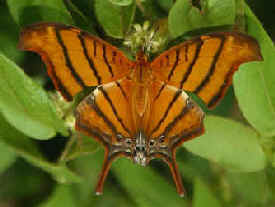
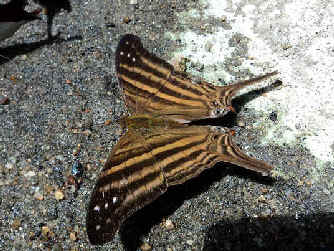
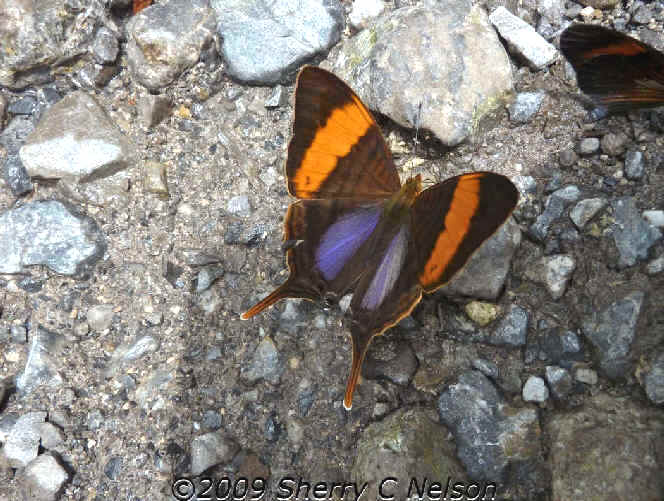
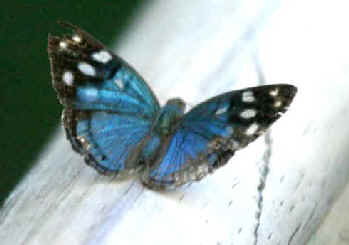
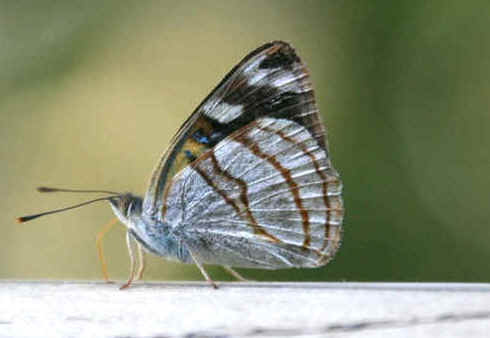
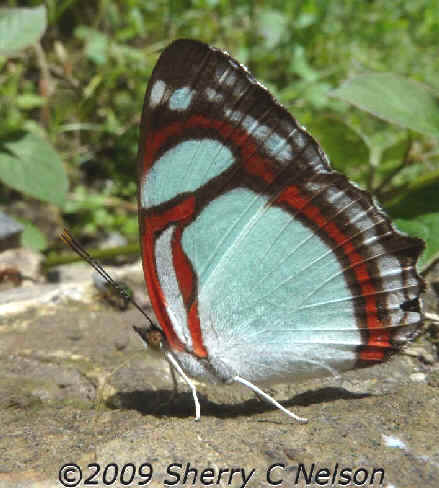
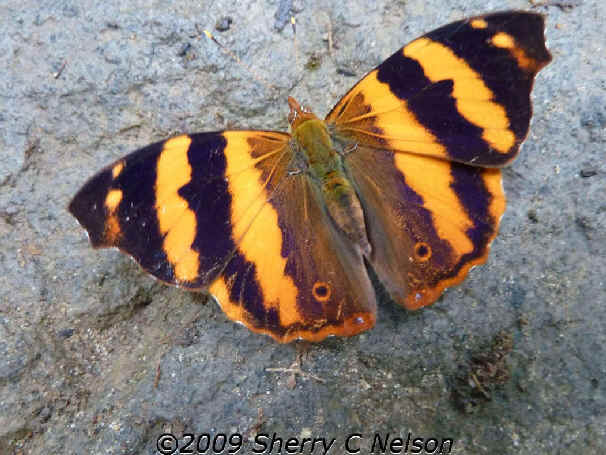
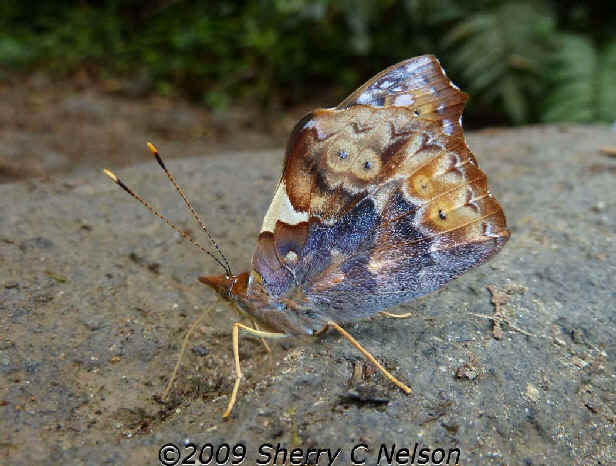
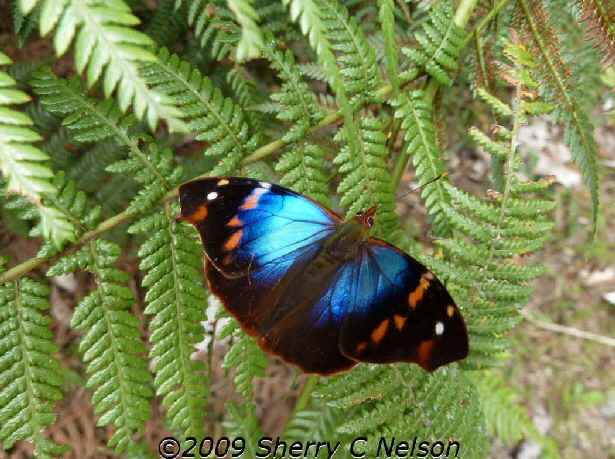
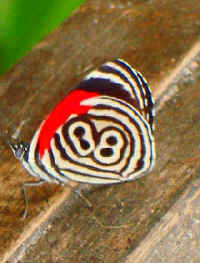
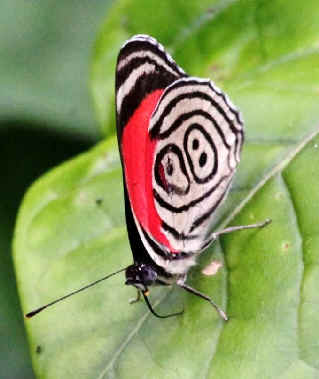
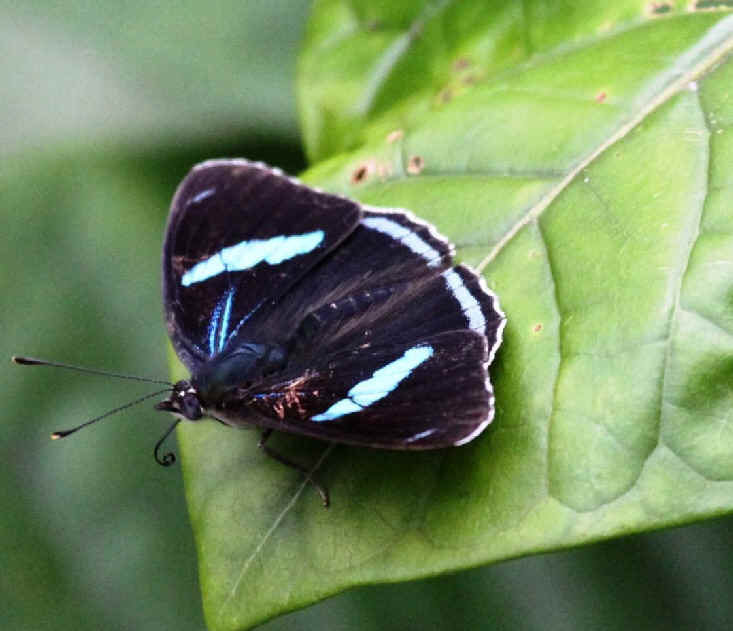
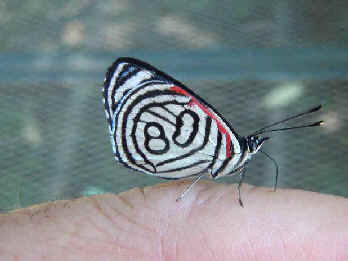


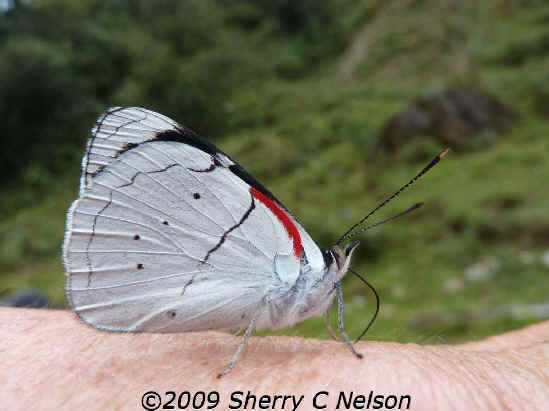
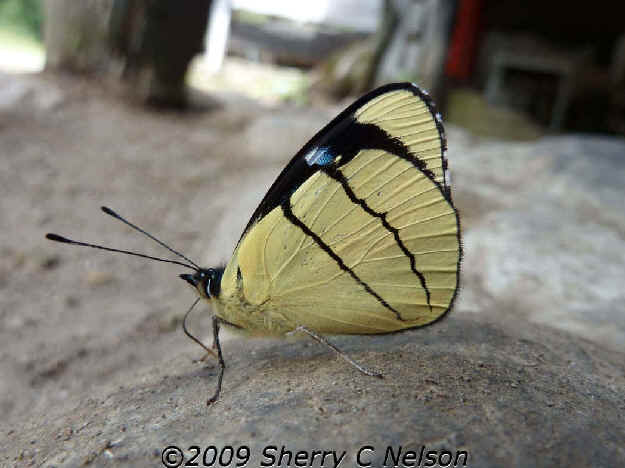
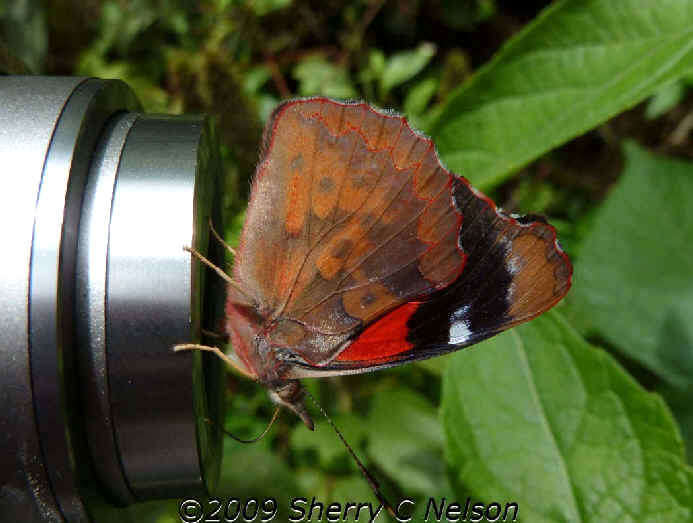
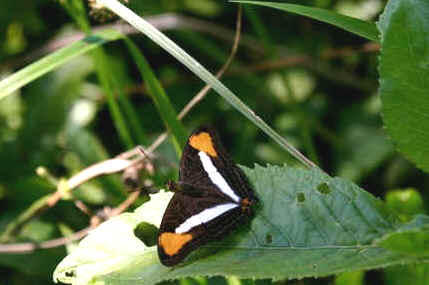
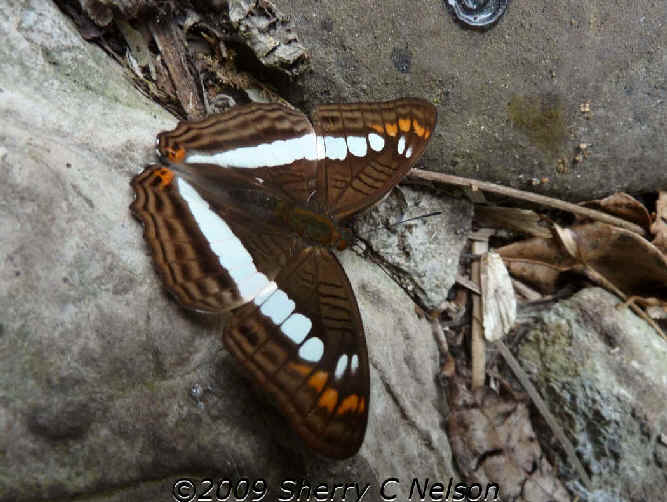
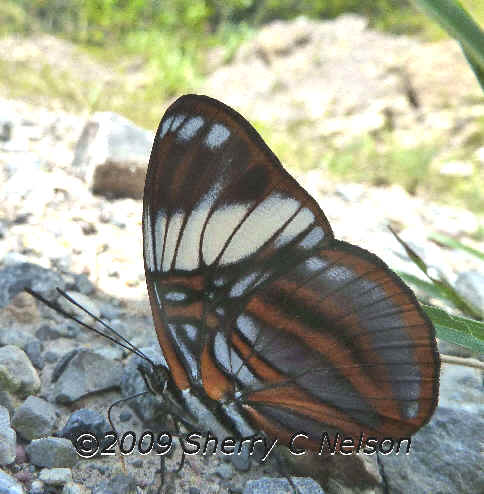
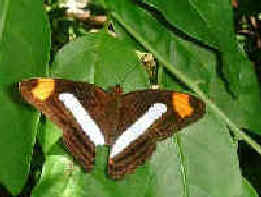
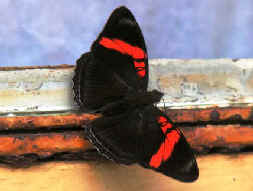
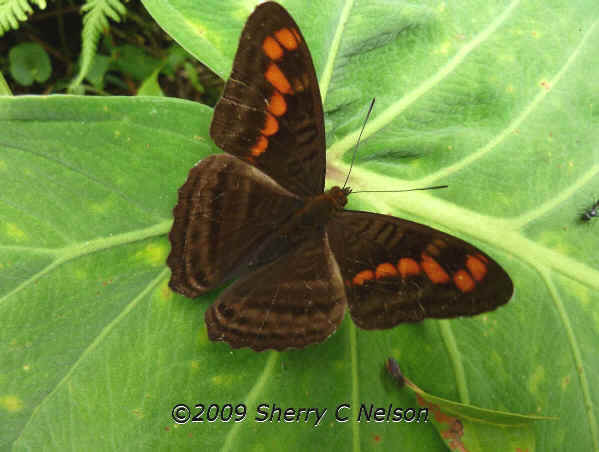
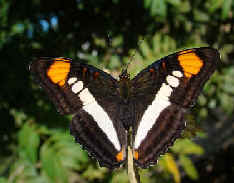
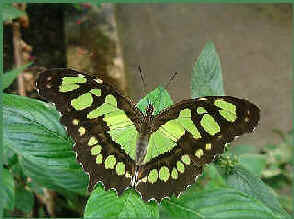
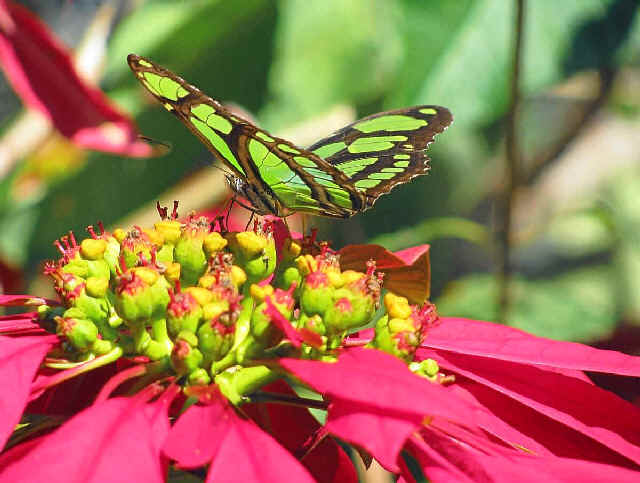
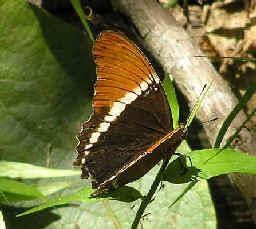
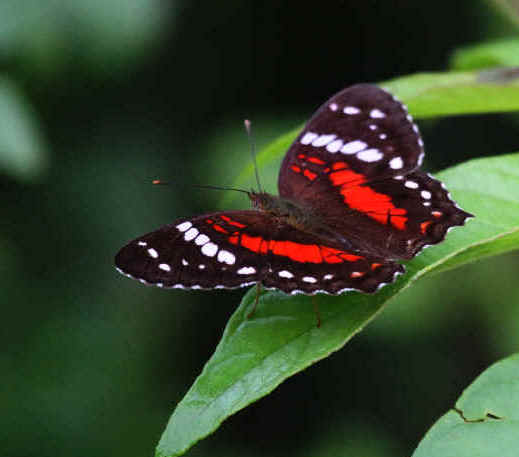
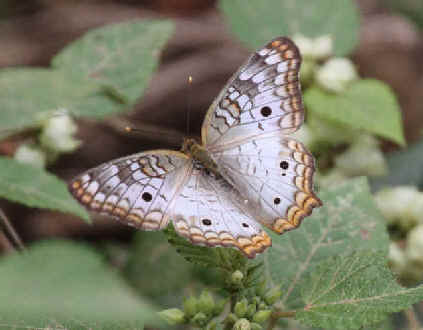
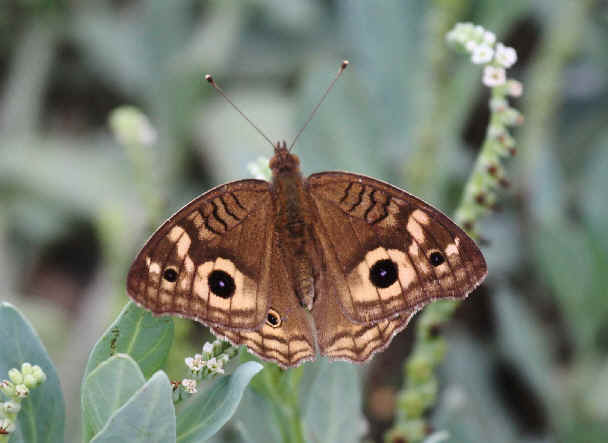
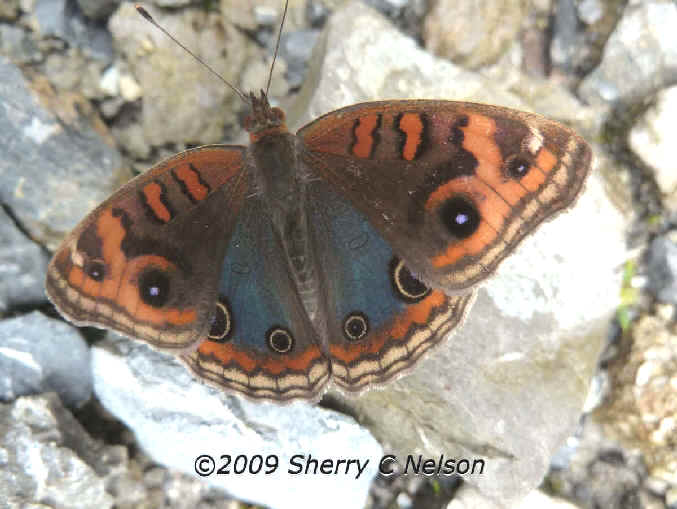
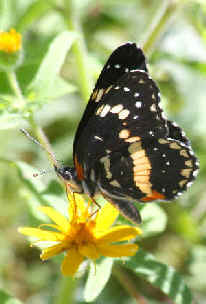
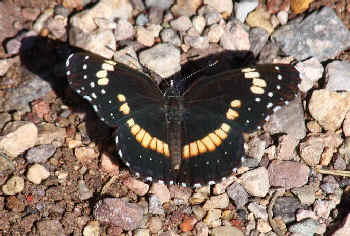
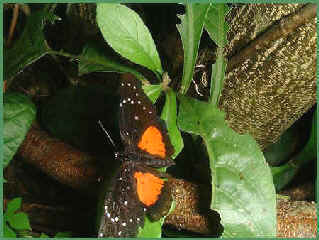
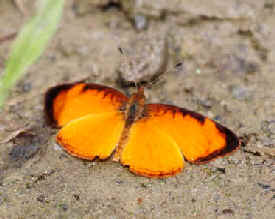
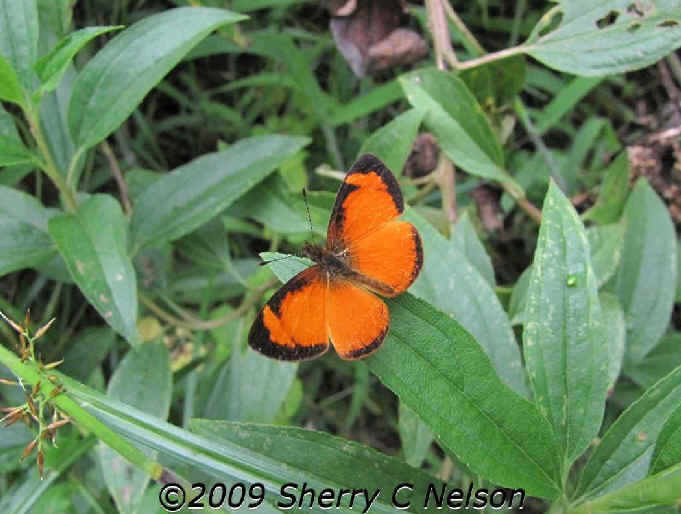
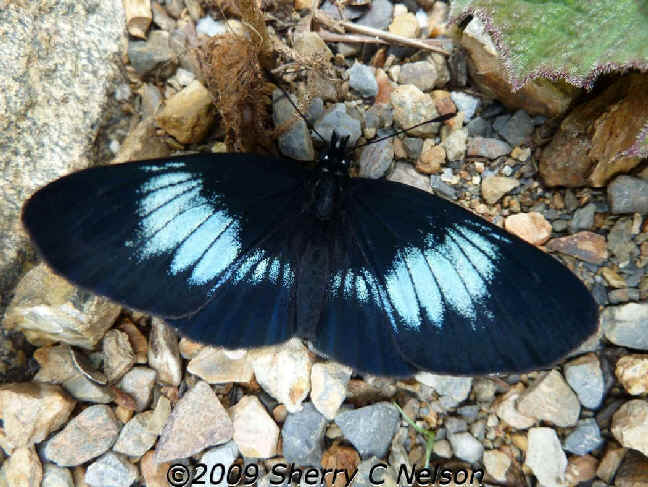
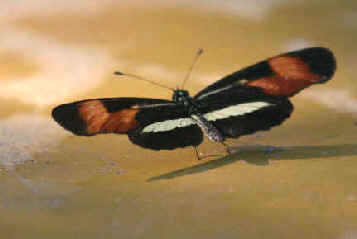
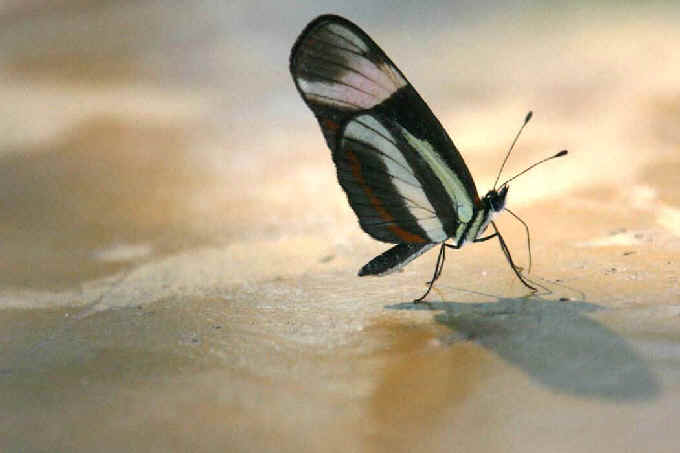
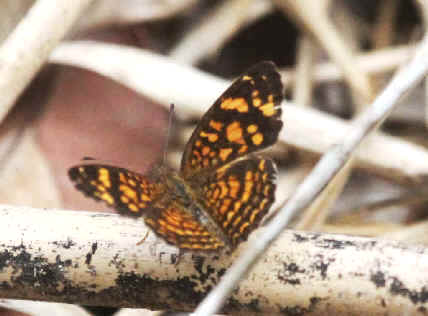
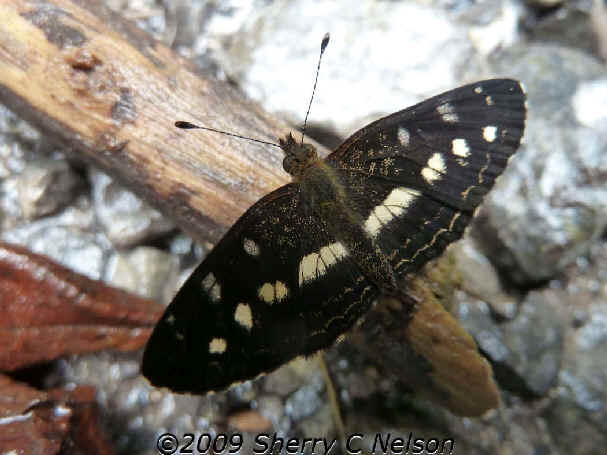
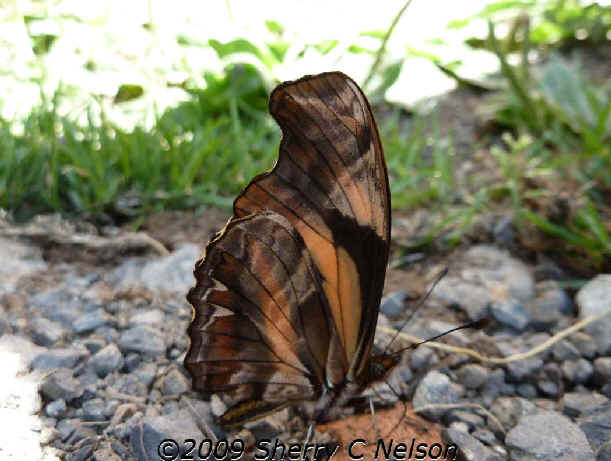
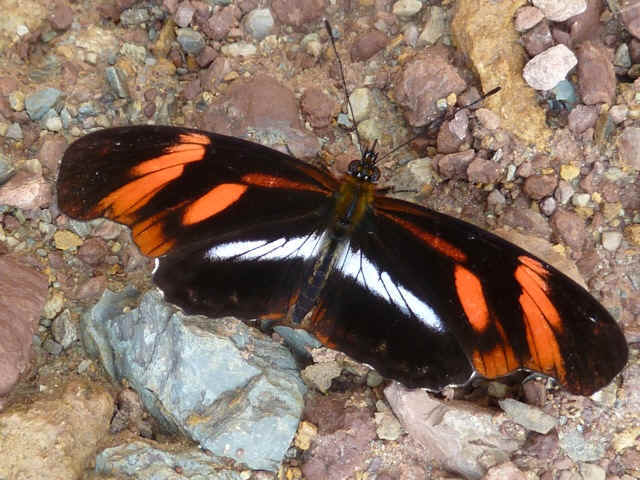
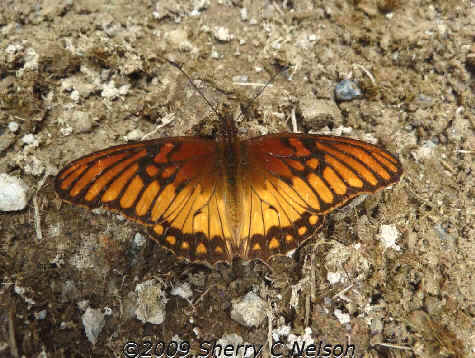
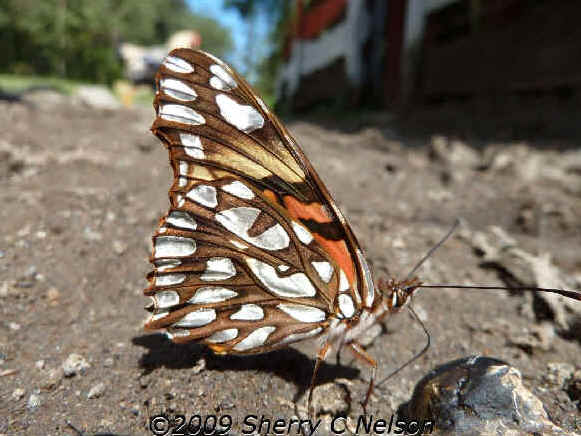
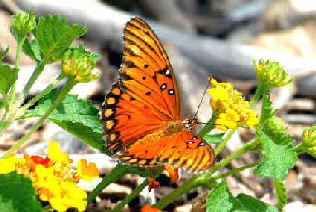
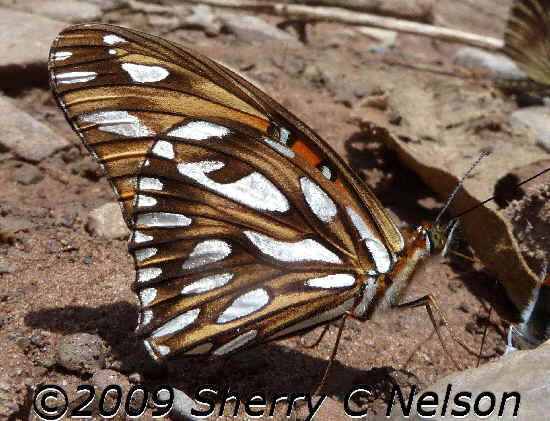
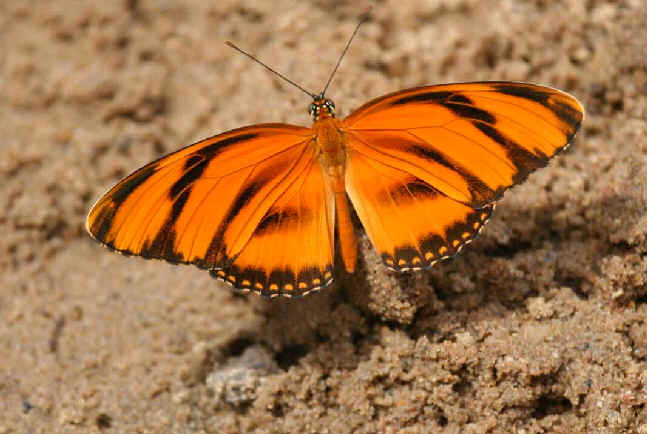
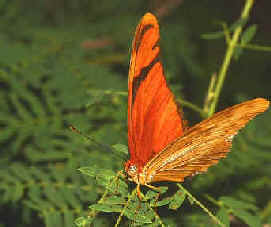
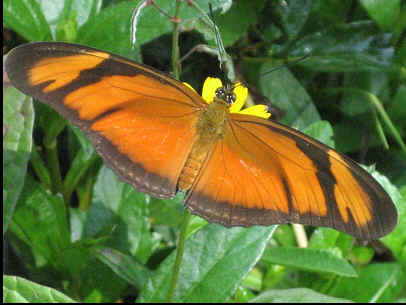
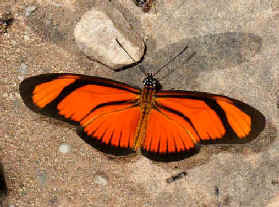
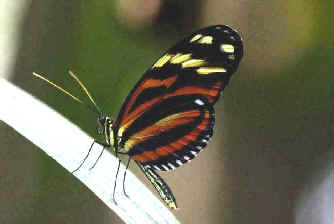
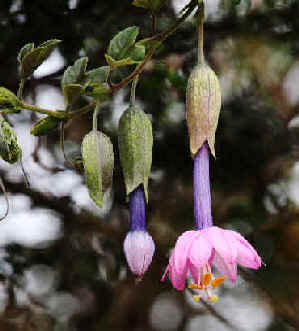
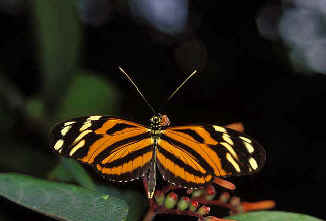
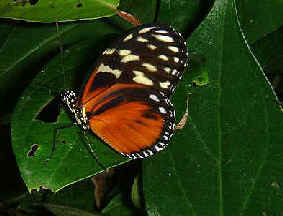
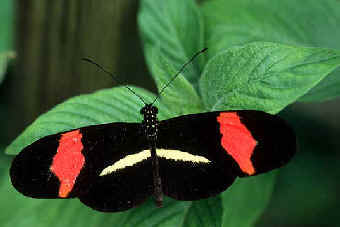
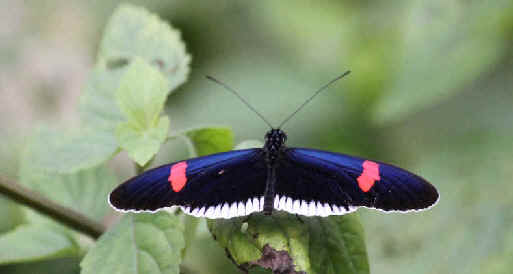

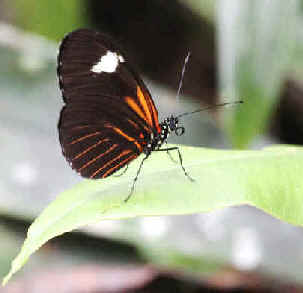
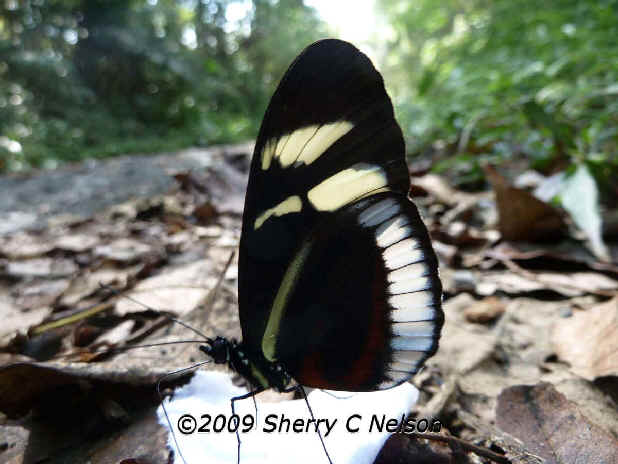
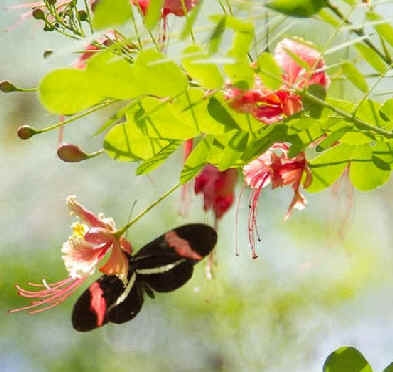
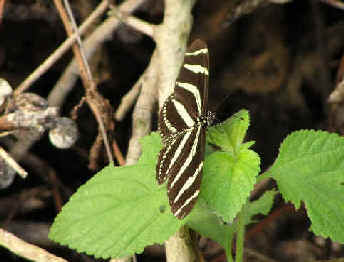
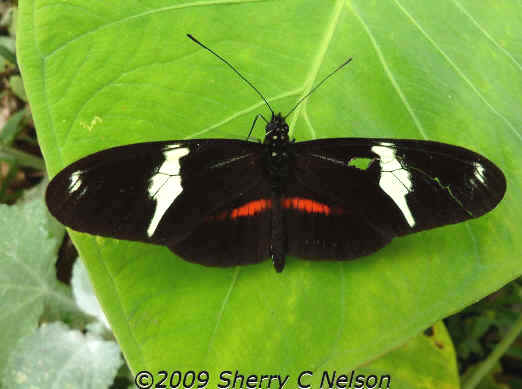
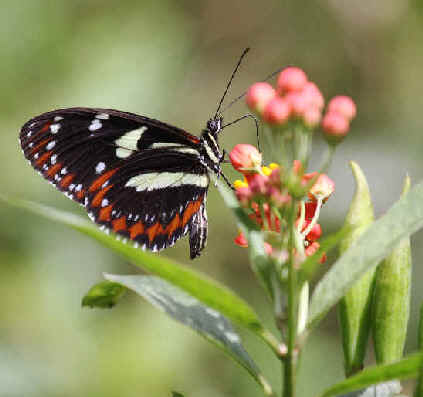
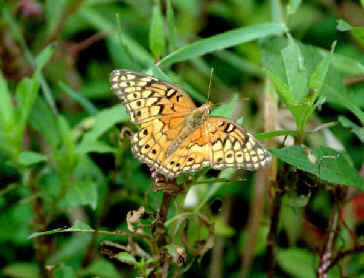
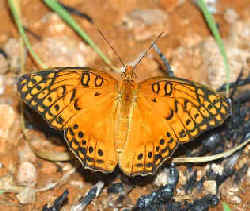

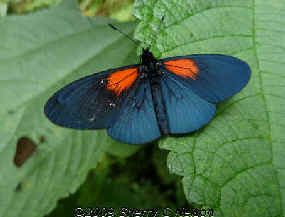
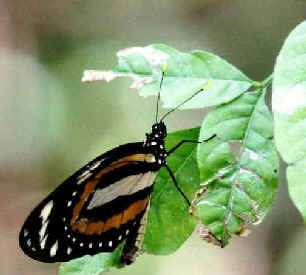


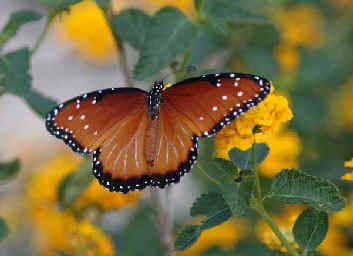
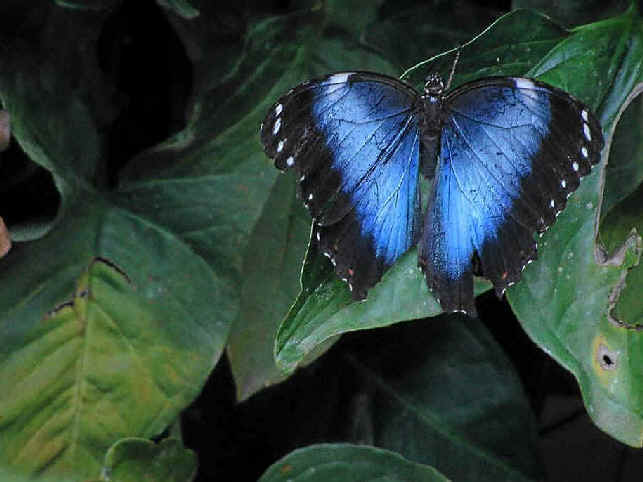
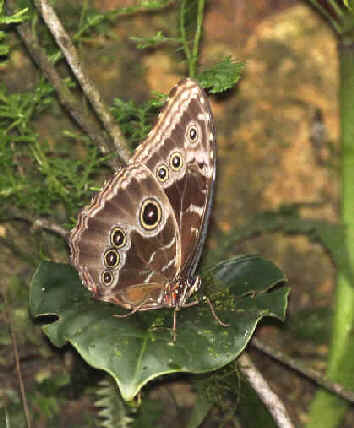
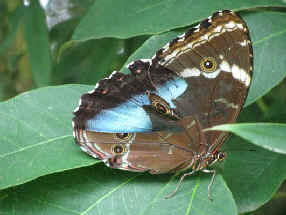
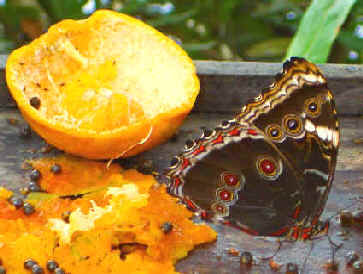
THE FOLLOWING COMMENTARY REGARDING BUTTERFLIES IN AMAZONIAN SOUTH
AMERICA
was written by Henry Walter Bates in 1863 in "The Naturalist on the River
Amazons"
and mentions the Morpho butterflies Morpho rhetenor (above) and Morpho
menelaus and
Morpho uraneis (both below).
"The neighborhood of Para
(in Brazil) is rich in butterflies. It will convey some idea of the diversity when
I mention that about 700 species of that tribe can be found within an hour's
walk of the town
(note: maybe an exaggeration.),
whilst the total number found in the
British Isles does not exceed 66, and the whole of Europe supports only 321.
The splendid blue Morphos, some of which measure seven inches in expanse, are
generally confined to the shady alleys of the forest. They sometimes come forth
into the broad sunlight. When we first went to look at our new residence
in Nazareth, a Morpho menelaus, one of the most beautiful kinds, was seen
flapping its huge wings like a bird on the verandah.
That species, however, although much admired, looks dull in colour by the side
of its congener, the Morpho rhetenor, whose wings on the upper face, are of
quite a dazzling lustre.
Rhetenor usually prefers the broad sunny roads in the
forest, and is an almost unattainable prize, on account of its lofty flight; for
it very rarely descends nearer the ground than about 20 feet. When it comes
sailing along, it occasionally flaps its wings, and then the blue surface
flashes in the sunlight, so that it is visible a quarter of a mile off.
There is another species of this genus, of a satiny-white hue, the Morpho
uraneis; this is equally difficult to obtain; the male only has the satiny
lustre, the female being of a pale-lavender colour."
